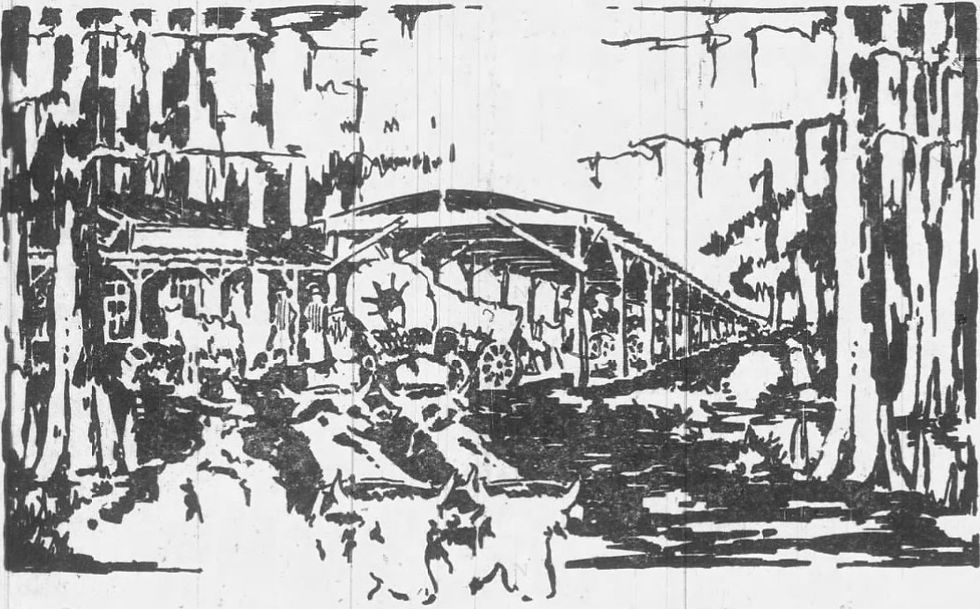Carpenter's Bluff Bridge
- Robin Cole-Jett

- Aug 31, 2023
- 3 min read

Spanning the Red River between Bryan County, Oklahoma and Grayson County, Texas lies an iron truss bridge that has captivated the people in the area for generations. Couples have become engaged and married on this bridge; teens have hung out, partied, or watched the stars here; families swam and picnicked under it; and working folks have used it as a quick way to get where they need to go. As there never were many bridges across the Red River, this bridge became an instant landmark between Texas and Oklahoma. But long before it ferried cars across, Carpenter's Bluff bridge served as a train crossing.
The MOG/KOG In 1904, the Missouri, Oklahoma and Gulf Railway (re-chartered as the Kansas, Oklahoma and Gulf Railway in 1919) made Denison, Texas its southern terminus in order to connect its origination point in Muskogee, Oklahoma to Dallas and Houston. With French and Belgian investments, the railroad was able to extend into Baxter Springs, Kansas and then into Joplin, Missouri. In 1910, the MOG built its southern-most bridge, which mimicked the same style as its other bridges, between the little towns of Hendrix, Oklahoma and Carpenter's Bluff, Texas. Because Carpenter's Bluff lay directly at its point of entry, and because the site was long known as the Carpenter's Bluff ferry crossing, it became locally known as the Carpenter's Bluff bridge, even though geographically, the entire bridge lay in Oklahoma. Name Changes While not much is known about the man who operated the ferry at Carpenter's Bluff, it's been reported that people began using the ferry in the 1860s. Folks in Indian Territory crossed to buy liquor, beer, and moonshine in Thief Neck, which how the Texas settlement on the other side of the river was known. Within a few years, however, the community was referred to by its more respectable name of Carpenter's Bluff. Its Indian Territory counterpart was the little town of Kemp, which was settled as Warner Springs in then-Panola County (Chickasaw Nation) before being renamed in 1890. When the MOG came through, though, the railroad bypassed Kemp. The citizens sued, but to no avail. Instead, the new settlement of Kemp City was formed along the tracks three miles to the west of Kemp, and most of Kemp's businesses relocated there. In 1910, Kemp City was re-named Hendrix after its first post master. Mind the Gap When the MOG built its railroad bridge, it severely hampered the ferry crossing at Carpenter's Bluff (or they bought out the ferry operation; I'm still unsure if the ferry operation had an operating license). The MOG thus built a wooden, "piggy back" bridge on the east side of the crossing to allow wagons, pedestrians, and later, cars to cross. The wooden bridge may have required tolls, but I have not found much evidence of this, actually. It was definitely a scary proposition to cross the bridge, especially when a train rumbled through. The shaking and the height —in fact, the bridge is one of the highest crossings between Texas and Oklahoma —must have been unnerving to drivers and spooked horses. The MOG/KOG Railway was never very successful, and it seized operations by the 1960s. When the state of Oklahoma took over the tracks in 1967, it converted the railroad bridge to handle vehicular traffic but did not remove the "piggy back" portion. Thus, the bridge remained as narrow as a freight train, which meant that cars had to take turns to cross. The nerve-wracking went up a notch, as now drivers had to ensure no one on the other side wanted to force their right-of-way.
A New Crossing In 2017, Bryan County and the State of Oklahoma built a wider concrete bridge just north of the bridge (and it's a two land bridge, meaning cars don't have to wait on each other to cross). The plans, as laid out by Bryan County commissioners, is that the old bridge at Carpenter's Bluff will remain for use by pedestrians and sight-seers. Personally, I hope it becomes the center of a rails-to-trails project... we'll have to wait and see.
Check out my small contribution to Grayson County history in the Texas Country Reporter:









The man that ran the ferry may have been a Shindler. My great or great great grandpa had a store and ferry at Carpenter's Bluff.